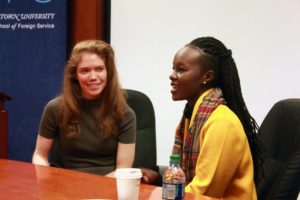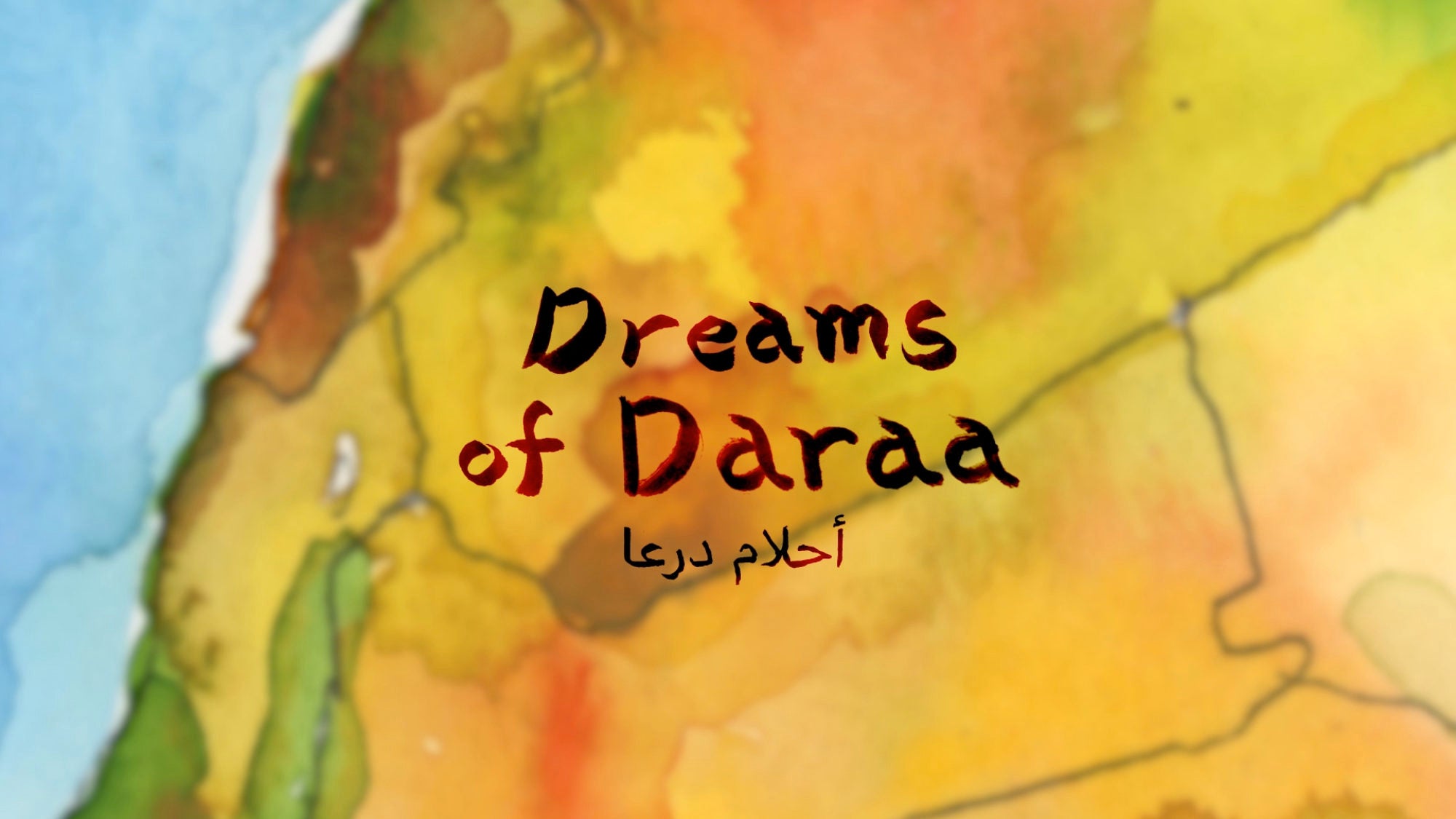Dowd, the documentary’s director, recalled the unconventional path she took that led her to Zaatari refugee camp in northern Jordan filming a troupe of professional clowns from Vienna, Austria. She interned at various news outlets, while at Georgetown, and after graduation worked with Al Jazeera America, before she decided to make a documentary film. However, by her own admission, she was thoroughly unprepared for the task she had taken on: “I basically just showed up in Jordan totally uninvited… without a good camera, or camera skills, or a plan.” Although initially she intended the documentary to be about the troupe, part of Red noses Clowndoctors International, a charity that seeks to bring joy and laughter to people in crisis, as she filmed her focus shifted to the story of one woman named Hanadi, and her three daughters.

Hanadi, as both Dowd and Ngare assert, is what makes the documentary special, a necessary quality these days when many people sadly suffer from “Syria-fatigue” due to the mass of content on the subject. Ngare praised Hanadi in glowing terms: “She just tells her own story so beautifully and Reilly is such a great director, she just takes what Hanadi is giving her.” The documentary follows Hanadi while she struggles to make ends meet in Zaatari. She wrestles with one big decision, whether she should return to Syria, to her hometown of Daraa, while the flow of refugees heads in the opposite direction. Eventually, she is overcome by the desire for home and for family – her mother and siblings remain in Syria and her husband is missing, though she intends to search for him. Dowd’s camera crew follows Hanadi as she renounces the Jordanian refugee status for herself and her daughters – an irreversible yet required step in order to cross the border back into Syria. The filmmakers told the assembled audience how uncertain the project was during Hanadi’s time in Syria: not only did they have no access to their main subject, but the risk of endangering Hanadi by making her identity known to the Syrian authorities was enormous. Only when Hanadi and her family made it to Switzerland (where she was to testify to the United Nations) and relocated to Germany to seek asylum, did the future of the movie become more certain.
In addition to Hanadi, her three children are also central figures to the documentary. However, in an effort to be sensitive to their young age, Dowd refused to interview them directly. Instead, she employed a daring artistic choice by incorporating drawings they did as animations throughout the movie. “Draw home,” the director said prompted the girls. The result is a deeply moving mash-up of creative mediums that deftly includes the perspectives of youth, without being exploitative.
“No refugee wants to leave their home… This a very global story that’s similar [to every case of forced migration], different in each context, but sharing certain themes,” explained Professor Donato.
Ngare joined the documentary team later in the position of impact producer. Her job is to prompt viewer engagement with the subject of the documentary in order to make concrete change. In response to an audience question about what she hoped would result from the movie, Ngare stated that there are two goals: one is to tell the stories of thousands of Syrian women experiencing similar hardships to Hanadi, but the other is more personal: “We would love to see a world in which we could create a way to support [Hanadi’s children] in their education and schooling.”

Both Dowd and Ngare emphasized how their time at the SFS has helped them in the creation of the documentary. Dowd, a former Culture and Politics major, spoke to how an understanding of government frameworks, and the intersecting roles of militaries, NGOs, and politicians, helped her negotiate the network of bureaucracy involved in filming at a refugee camp and advocate on behalf of Hanadi. Ngare, a graduate of the Science Technology and International Affairs program, explained how knowing the environmental factors intrinsic to the Syrian Civil War helped contextualize her work on the project.
The two filmmakers are both engaged as fellows of the Fledgling Engagement Lab, a highly selective program which supports projects that are focused on issues affecting vulnerable populations that are poised for action. They are currently working on a last push of fundraising to finish the final stages of production; and they hope to apply to the Berlinale documentary film festival held in February in Germany’s capital. To learn more about Dreams of Daraa, go to the documentary’s website.
